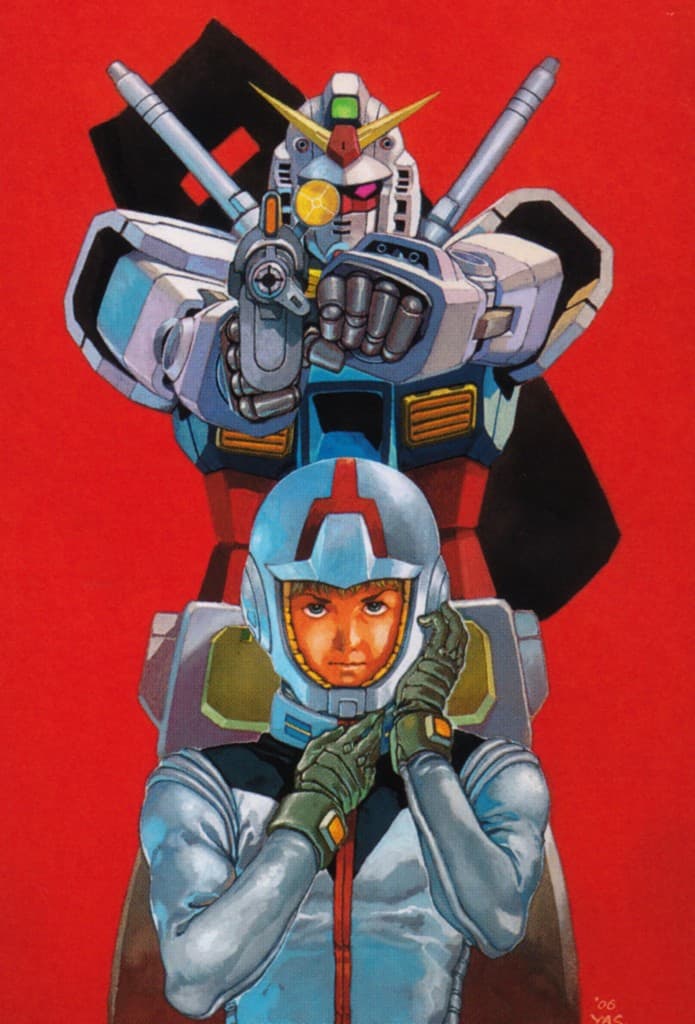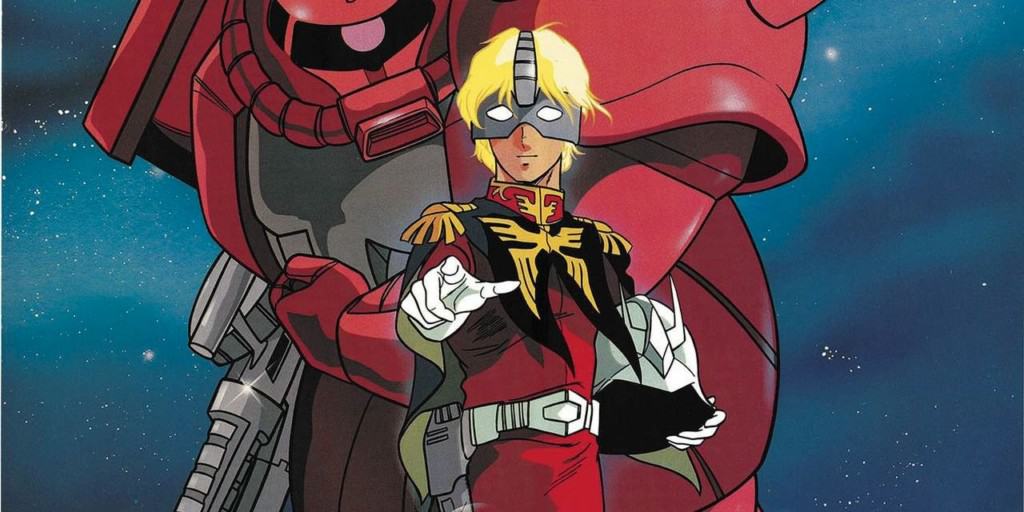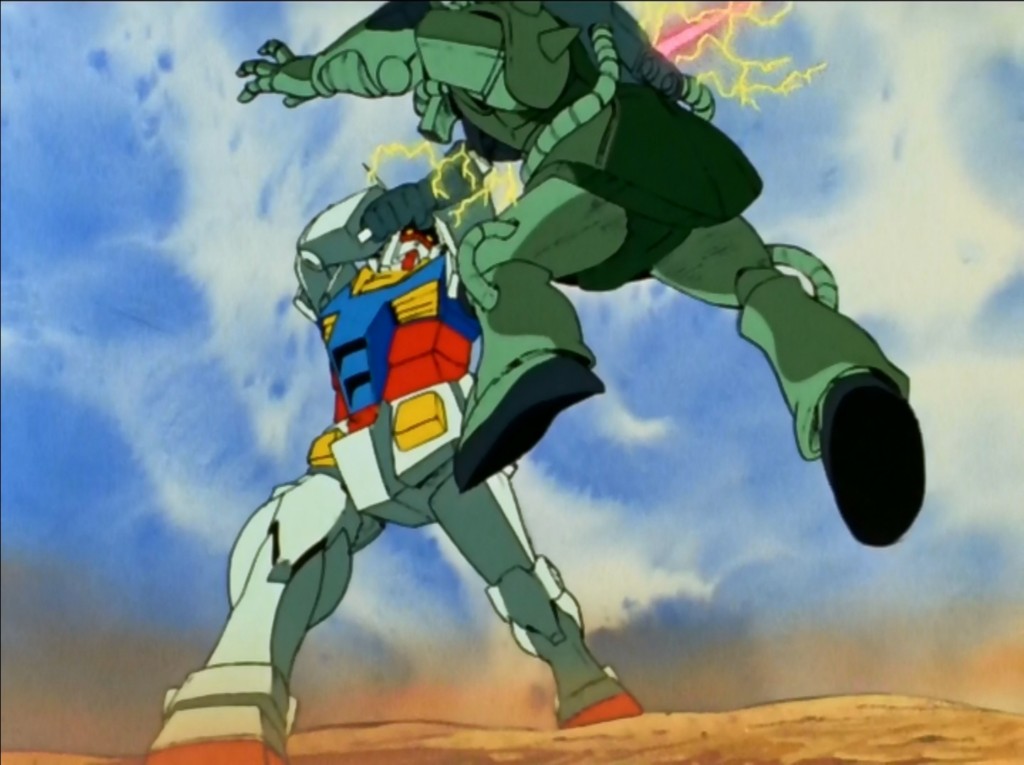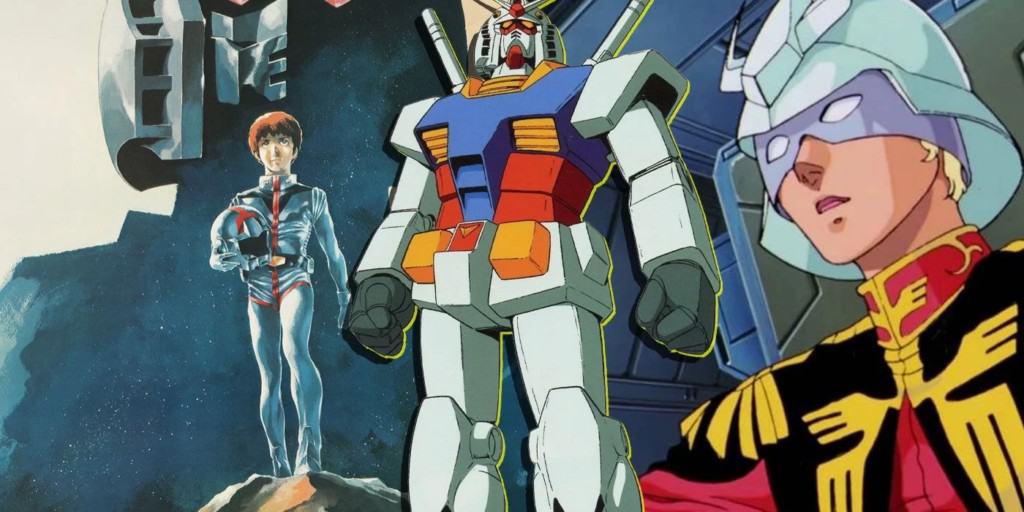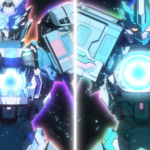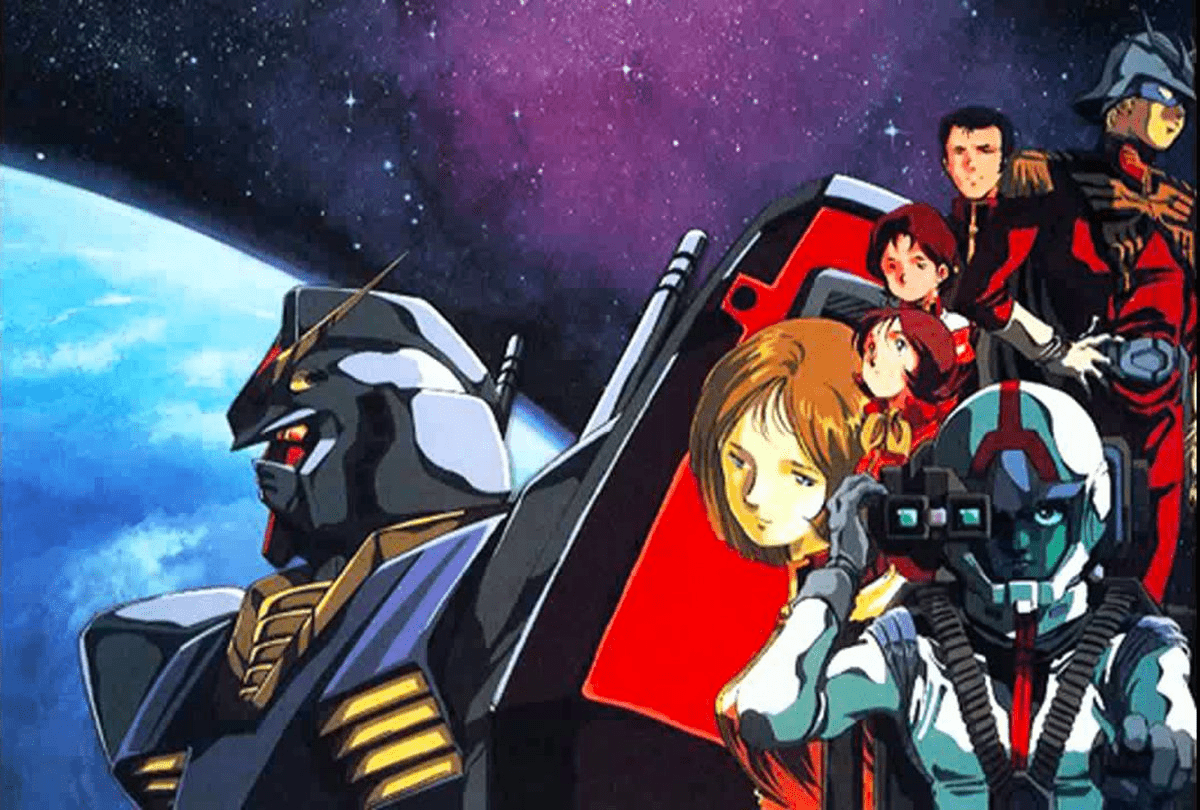
Series Recommendation: Mobile Suit Gundam 0079
TOBE! GUNDAM!
Every great franchise has to start somewhere. And that is also true for the biggest mecha franchise of all time: Gundam. It all started back in 1979 when Director Yoshiyuki Tomino wanted to portray a war story along with all of its sadness, misery and also hope. The 0079 anime actually wasn’t very successful at the time of its broadcast and was almost the end of the franchise (well series at the time). However, thanks to model kit, the series was saved and produced many sequels – eventually becoming the giant mecha behemoth that it is today.
Gundam 0079 is set during a war between two sides: The Earth Federation – people who hold power on the Earth – and the Principality of Zeon – citizens of space colonies. The Zeon people are dissatisfied with the status quo set by the Earth Federation – hence they started a war to claim their rights. Both sides wage war using giant robots called mobile suits across colonies. The war finally reaches Side 7 – where a young teen named Amuro Ray was living his life fiddling with machinery and small robots. One day Zeon forces attacked the Colony prompting Amuro and his friend Fraw Bow to evacuate. However, Amuro chanced upon the Federation’s newest super weapon that his own father helped develop: The Gundam. Amuro boarded the Gundam and started his turbulent war journey along the White Base – a space battleship that was also on Side 7.
+ Plot: The chronicle of a teenage soldier isn’t a new concept in this day and age, but in the 80s full of Super Robots with really crazy abilities, Gundam was something new and unique. The journey of Amuro is full of dramatic events and bloodshed that really took an effect on Amuro’s mental and physical wellbeing – which is something Real Robot series usually neglect or handwave away after one episode. You can really feel the psyche of Amuro changing throughout the White Base’s journey. As he put more and more achievements on the Gundam, the more the war “dye” him in the color of a soldier. But his story isn’t simply a “war hero” full of glory and honor, but with many contradiction, pain and sadness. Director Tomino was famous for his “kill-em-all” style with many casualties in his series, and for Gundam it wasn’t any less brutal. It’s notable that amongst the less notable and dramatic deaths, there are many that leave a deep impact and consequence on the characters and the story, further highlight the fact that in war, some lives are lost without a care and some can turn the tide of the conflict.
Along with Amuro is also another character that somehow become even more famous than him and instantly turn into a fan-favorite with his mysterious and “gallant” demeanor – Char Aznable. A good hero needs a good villain – but Char isn’t a villain, and this is not a simple story about black and white in a war. There are no “correct” side of justice. Char and Amuro are just two people with their own agendas getting swept up in the war, but one is voluntary while the other isn’t exactly willing. Their dynamic extend far beyond 0079 and became the most iconic rivalry in the franchise.
+ Plot: The chronicle of a teenage soldier isn’t a new concept in this day and age, but in the 80s full of Super Robots with really crazy abilities, Gundam was something new and unique. The journey of Amuro is full of dramatic events and bloodshed that really took an effect on Amuro’s mental and physical wellbeing – which is something Real Robot series usually neglect or handwave away after one episode. You can really feel the psyche of Amuro changing throughout the White Base’s journey. As he put more and more achievements on the Gundam, the more the war “dye” him in the color of a soldier. But his story isn’t simply a “war hero” full of glory and honor, but with many contradiction, pain and sadness. Director Tomino was famous for his “kill-em-all” style with many casualties in his series, and for Gundam it wasn’t any less brutal. It’s notable that amongst the less notable and dramatic deaths, there are many that leave a deep impact and consequence on the characters and the story, further highlight the fact that in war, some lives are lost without a care and some can turn the tide of the conflict.
Along with Amuro is also another character that somehow become even more famous than him and instantly turn into a fan-favorite with his mysterious and “gallant” demeanor – Char Aznable. A good hero needs a good villain – but Char isn’t a villain, and this is not a simple story about black and white in a war. There are no “correct” side of justice. Char and Amuro are just two people with their own agendas getting swept up in the war, but one is voluntary while the other isn’t exactly willing. Their dynamic extend far beyond 0079 and became the most iconic rivalry in the franchise.
+ Animation: Well, it was quite…dated. The series was made in 1979 where animation was still quite analogue and rely much more on manual labor. And back then, the 2D hand-drawn model were usually inconsistent, and there are many “funny” frames of 0079 where the Rx-78-2 was drawn in pretty ridiculous proportions. Still, the animation managed to deliver the plot well enough during major battles. The explosions are perhaps the best part of the series. Truth be told, the 0079 animation hasn’t aged well, but the good stuff is in the characters.
+ Mecha Design: Initially, the series was to be titled “Gunboy” with a more “monotone” mecha design aesthetic that was very in-line with the 70s, however, the sponsors want to be able to monetize the model, so the design and overall color-scheme was modified heavily. What we got was a bright red, blue, white with yellow accent design that really shouldn’t do too well in a realistic war settings. However, Okawara-sensei was able to turn those bright-colored machines into true wartime weapons. The “core fighter” mechanics is also quite innovative with how they use that later on with the G-Fighter.
+ Mecha Design: Initially, the series was to be titled “Gunboy” with a more “monotone” mecha design aesthetic that was very in-line with the 70s, however, the sponsors want to be able to monetize the model, so the design and overall color-scheme was modified heavily. What we got was a bright red, blue, white with yellow accent design that really shouldn’t do too well in a realistic war settings. However, Okawara-sensei was able to turn those bright-colored machines into true wartime weapons. The “core fighter” mechanics is also quite innovative with how they use that later on with the G-Fighter.
+ Music: Tobe! Gundam has become the household name for the franchise. It is certainly one of the most iconic song of the series. Performed by Koh Ikeda, the song is filled with youthful energetic beat, and the lyrics remind you of those “recruitment” song for the army, which sorta reflect the irony of Amuro’s situation. He didn’t want to go to war nor pilot the Gundam at all, but he is the only one capable of doing so and he kept perform great military feats with it. The rest of the BGM were also very decent, especially the sound effect parts for weapons and lit-up eyes. The series also gave us “Gallant Char” which is a very great tune.
+ Conclusion: Overall, Gundam 0079 is sorta a mixed bag in this day and age. On one hand, the animation hasn’t aged well, there are quite a number of moments that look downright silly, but there are also quite a few that looks decent. In addition, the story and the characters are timeless creations that still hold up to this day. A unique perspective about a war – and how a normal teenager deal with all the loss, the pain that comes with glory. Everyone in the series has a different story to tell as they all saw a different story even though the events are the same. As the start of a great franchise and the first of the most established timeline in the Gundam series, it is highly recommended to watch the tv series if you are a Gundam fan. There are also 3 compilation movies but they cut out a lot of important moments from the TV series, so I advise against watching them as a shortcut to experience 0079, you gotta start with the original to get the full package that Mobile Suit Gundam has to offer.
+ Conclusion: Overall, Gundam 0079 is sorta a mixed bag in this day and age. On one hand, the animation hasn’t aged well, there are quite a number of moments that look downright silly, but there are also quite a few that looks decent. In addition, the story and the characters are timeless creations that still hold up to this day. A unique perspective about a war – and how a normal teenager deal with all the loss, the pain that comes with glory. Everyone in the series has a different story to tell as they all saw a different story even though the events are the same. As the start of a great franchise and the first of the most established timeline in the Gundam series, it is highly recommended to watch the tv series if you are a Gundam fan. There are also 3 compilation movies but they cut out a lot of important moments from the TV series, so I advise against watching them as a shortcut to experience 0079, you gotta start with the original to get the full package that Mobile Suit Gundam has to offer.
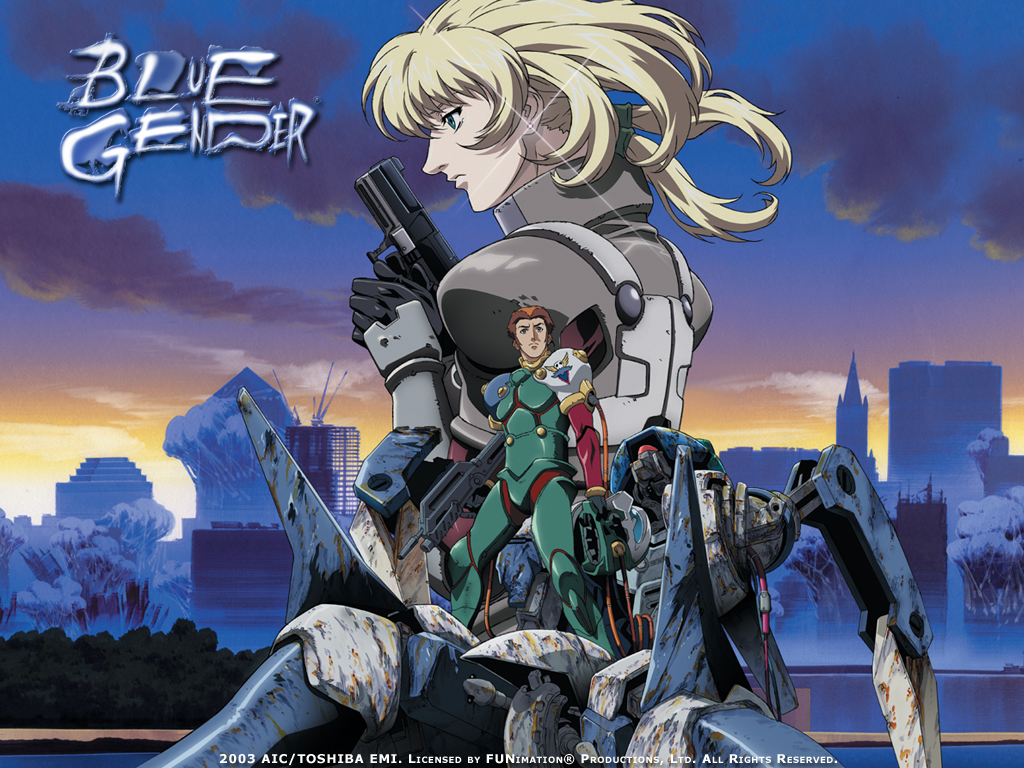
A classic premise of human versus monsters that push one’s limit to the max. But can our hero overcome that limit, or succumb to the unending fires of war.

An action-filled romcom that takes place in the vast space, Vandread is a story about a society divided. For some obscure reasons, men and women are forced to live separately on different colonies, destined to never come into contact with each other. Until the day Hibiki Tokai, our teenage hormone-filled male, decided to steal a Vanguard – a mecha used for the gender war. He then got caught in an attack by female pirates and was forced to journey with them when they all got thrown through a wormhole and had to look for a…
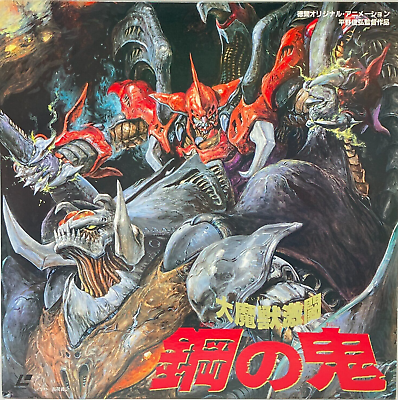
Daimajū Gekitō: Hagane no Oni (大魔獣激闘 ~鋼の鬼~, Fierce Battle of Colossal Beasts: Steel Devil) is a 1987 Japanese original video animation directed by Toshiki Hirano, with a screenplay by Shō Aikawa. Mechanical designs were handled by Kōichi Ōhata, and Masami Ōbari served as animation director. The story follows Takuya, who visits a research facility to reconnect with an old friend, uncovering their shared involvement in a mysterious experiment conducted three years earlier, in 1984.
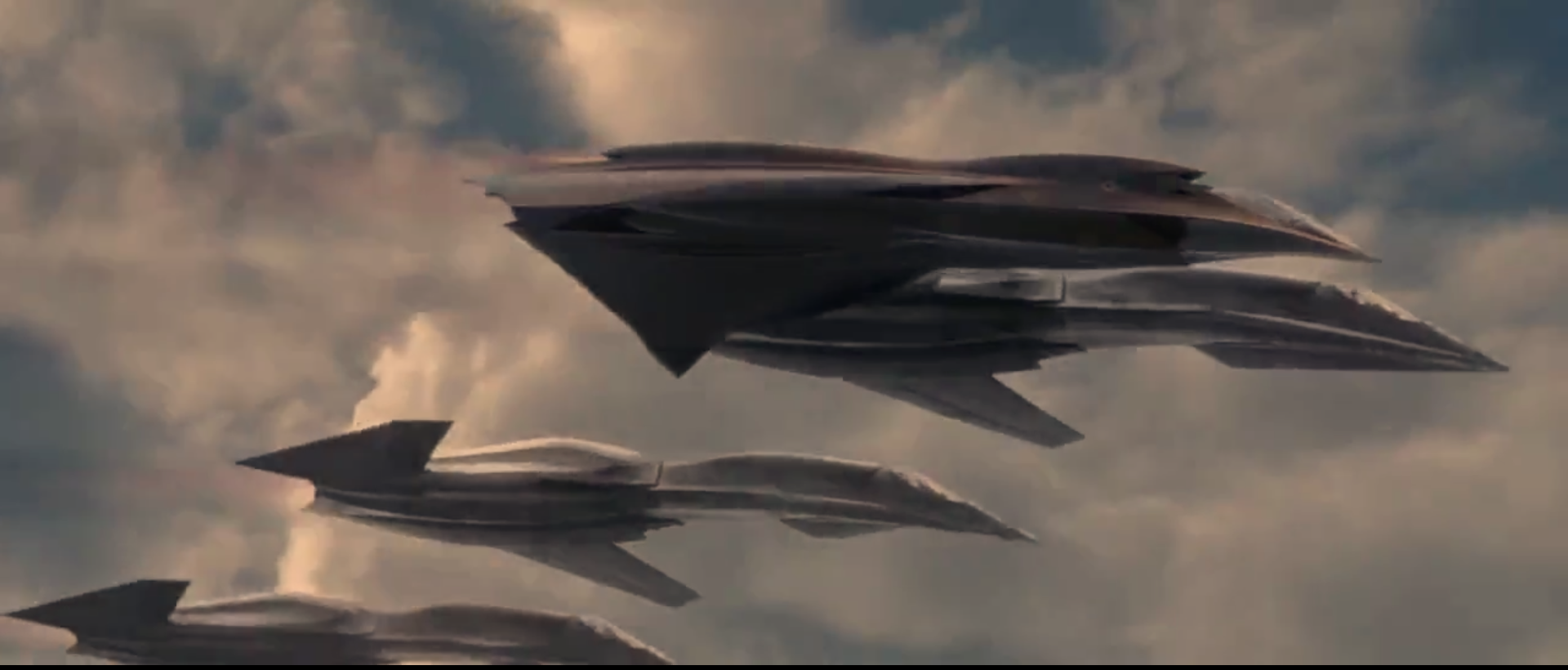
Let’s turn and burn! A movie about futuristic stealth fighter and AI-jet. Sounds familiar? This is Macross Plus live action with a sprinkle of Ace Combat and Yukikaze.
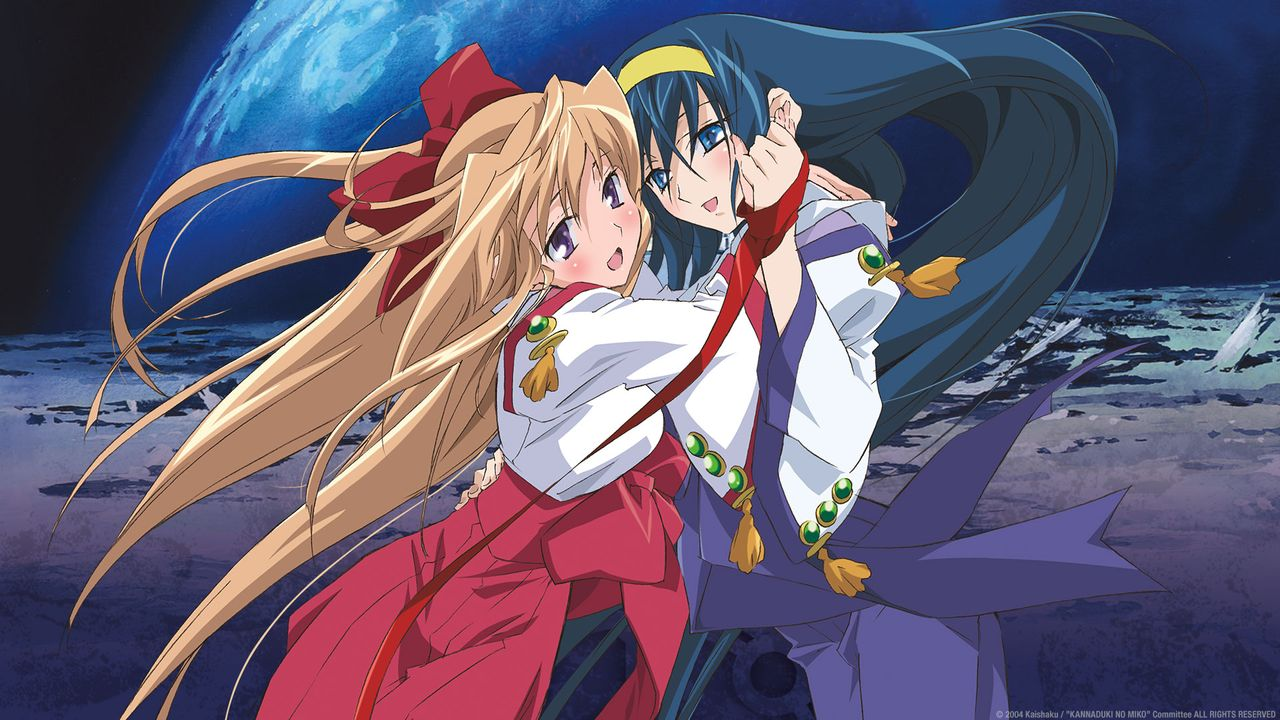
A combination between Japanese myths and mecha. An intricate relationship between 2 girls and one guy, with intense Super Robot combat in-between.

A chance to see the A.D Police from Bubblegum Crisis in honorable action. Two detectives take on cases of rampage Boomers, unraveling a sinister plot that can change the world.
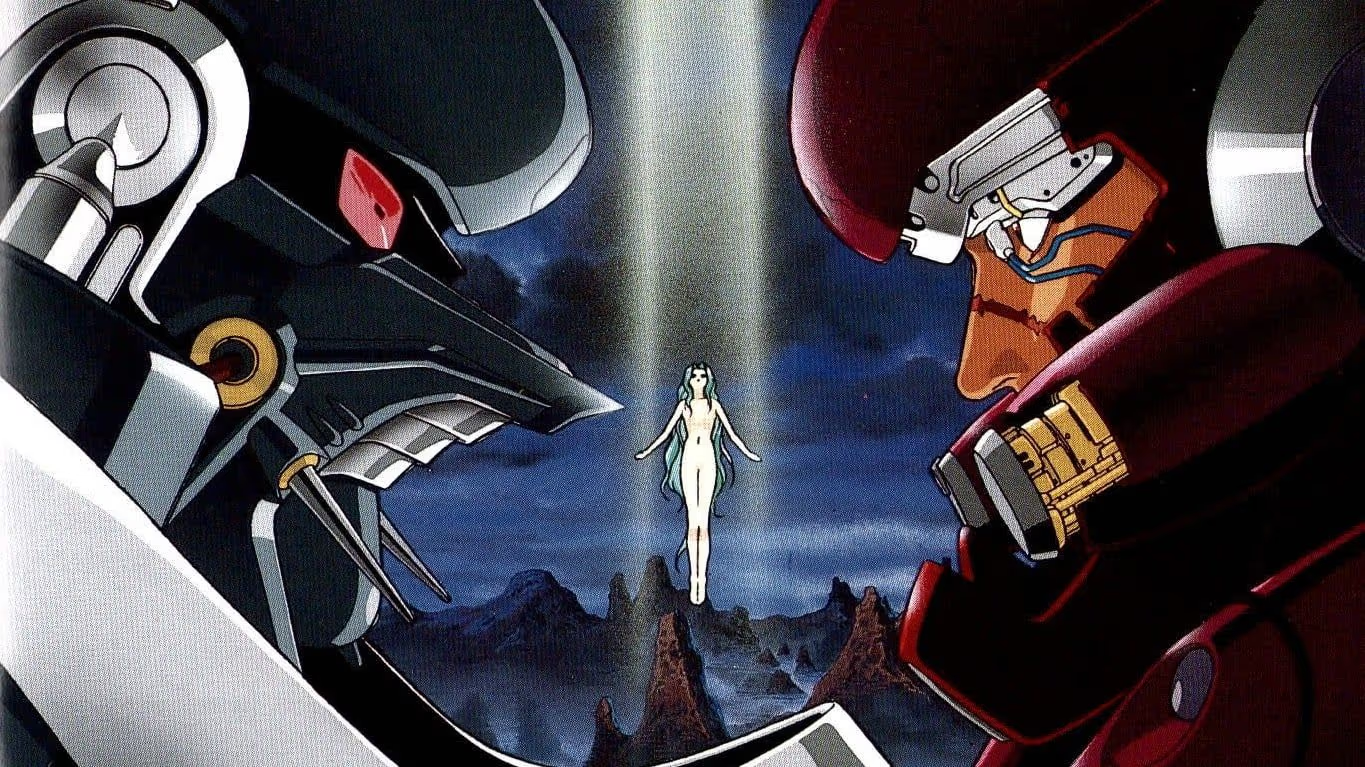
An apocalyptic tale of burning sand and monsters. A young man set out for vengeance, acquiring the usual hot chick and robot buddy on the way.
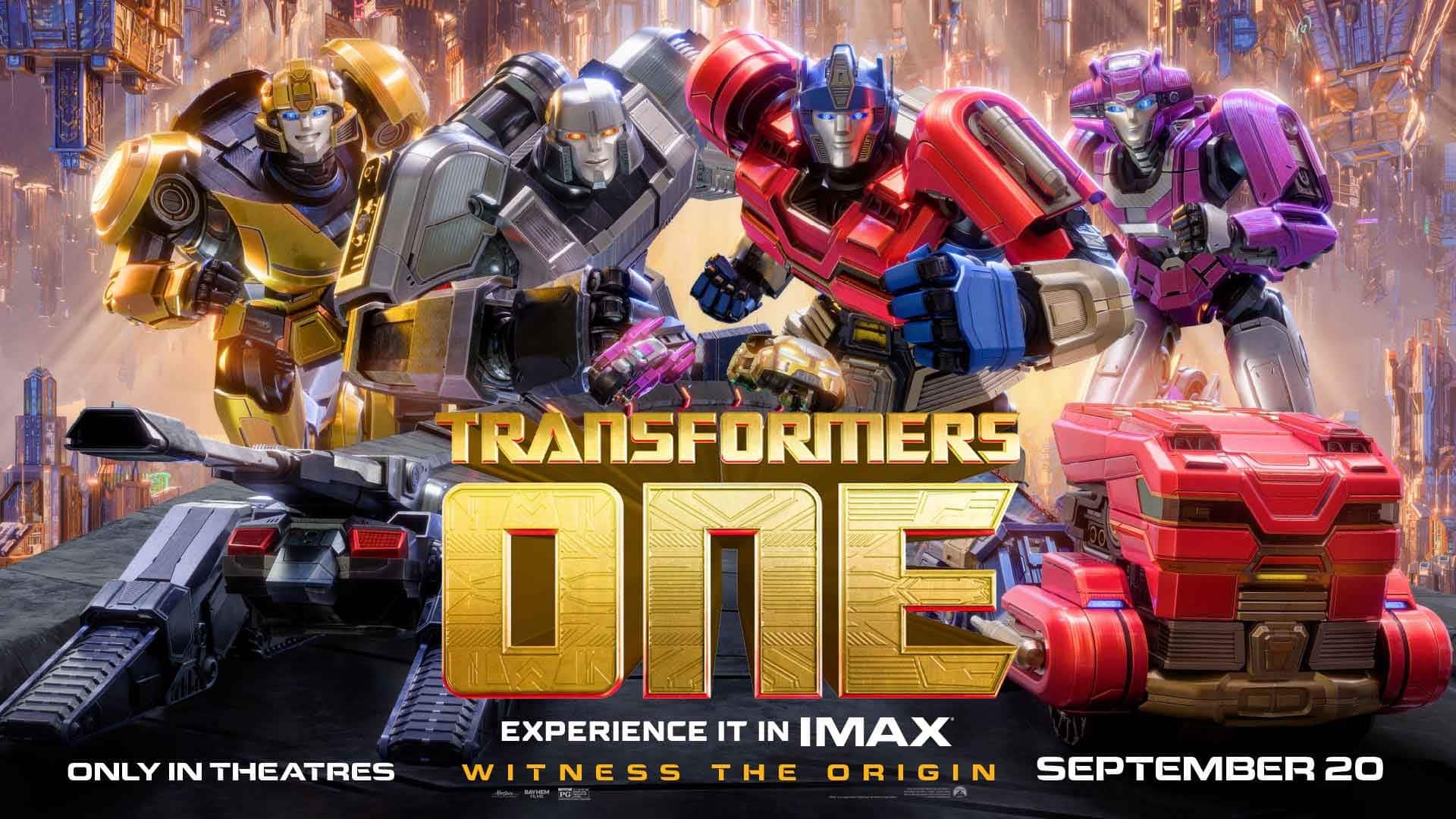
A refreshing tale about how the best of friends became sworn rivals. A vibrant, well animated movie where characters shine through their own merits, and bring a new wind to the franchise.
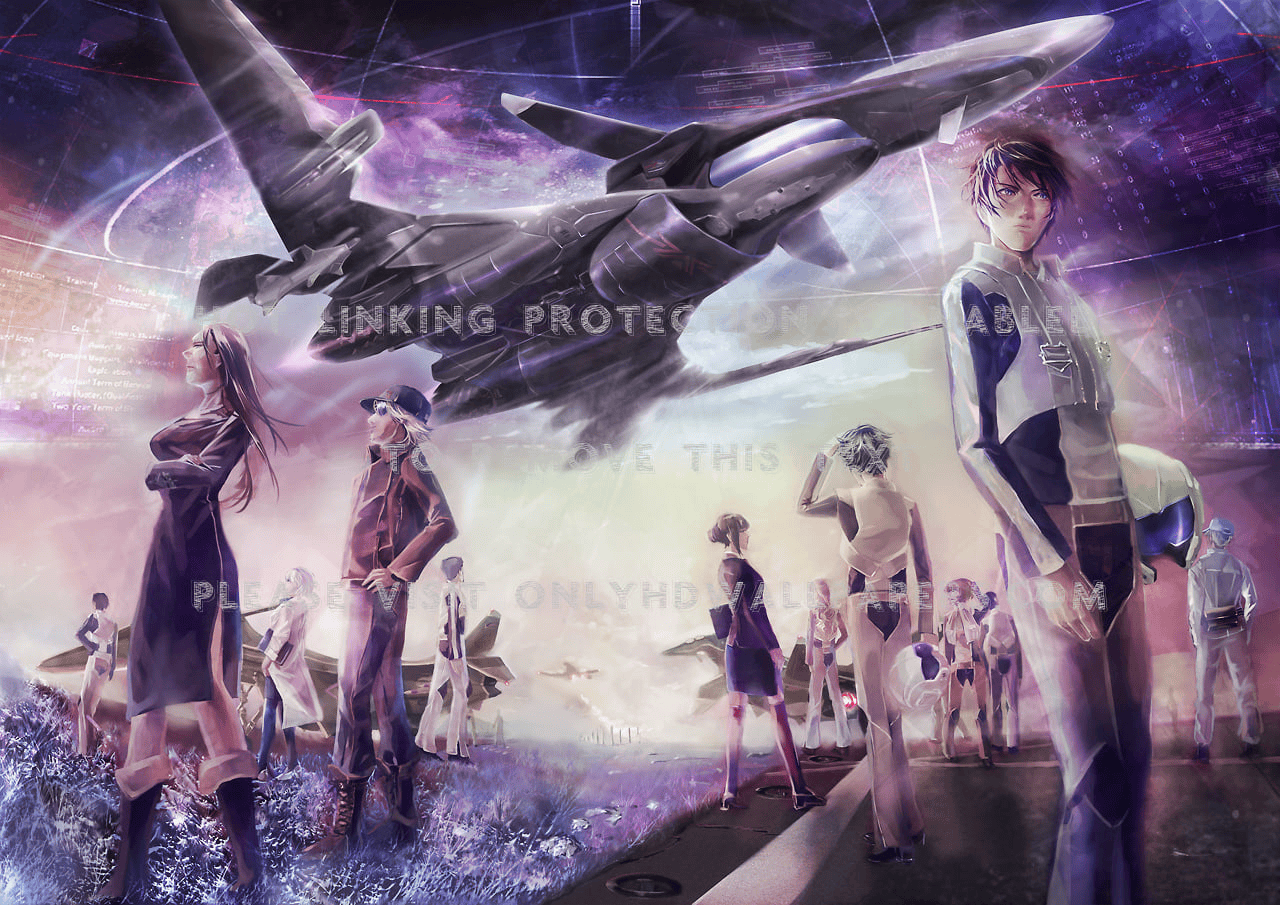
The fruit of collaboration with Japan Air Self-Defense Force, the air combat scenes of this anime is what set it apart
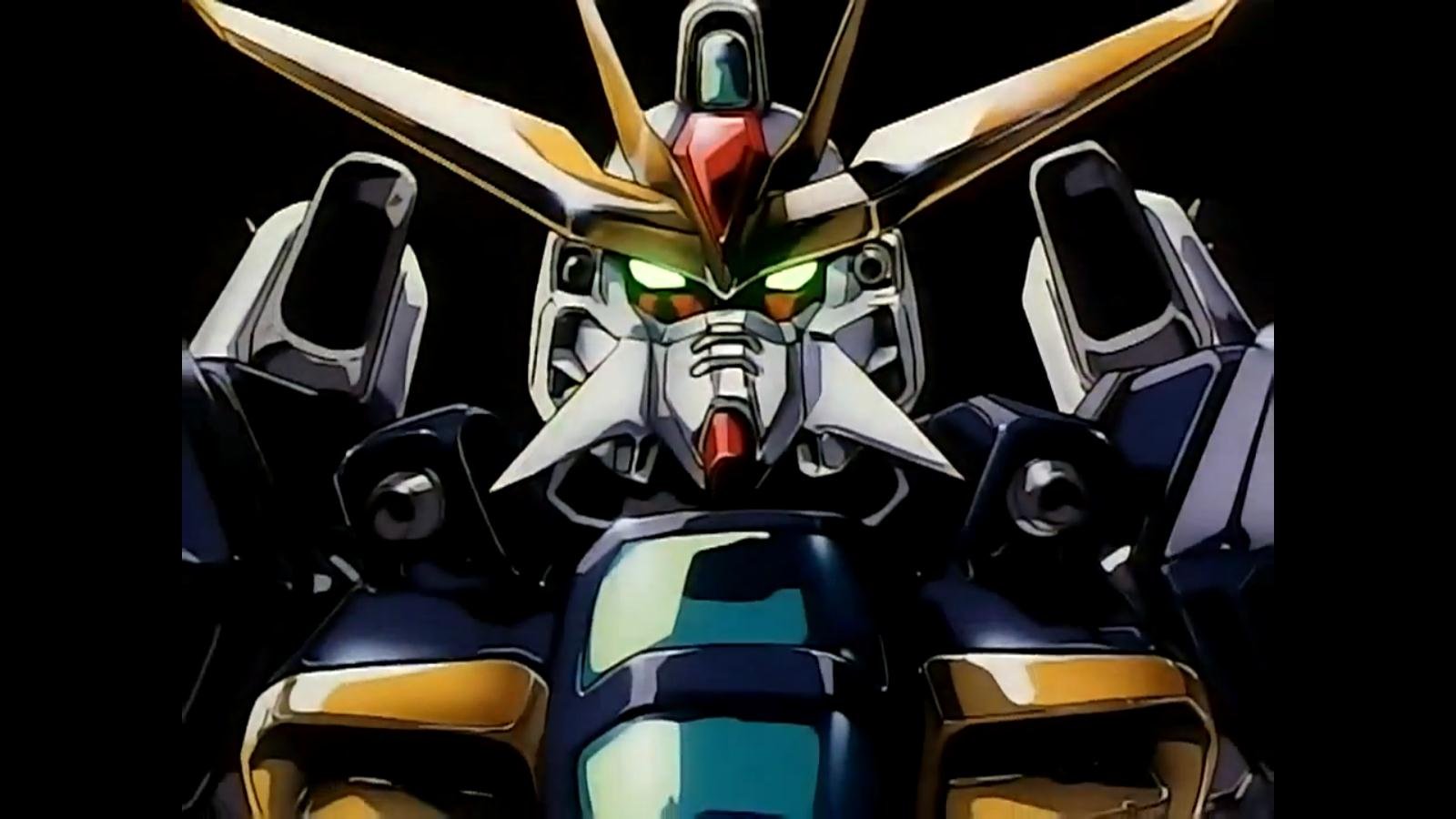
Despite often being overlooked by newer fans, After War Gundam X is a must watch for any Gundam lovers.

Passion makes satisfaction. A group of student show what they can accomplish with a mecha short film that leaves you desperately wanting more!

A seemingly impossible task of building Mazinger Z hangar in real life. A ragtag team of a planning company assembled the Fantasy Division to turn fiction into reality.

A light-hearted series that turned into intense space opera. The Girl Who Leapt Through Space leaps through many genre to deliver a unique experience and turn everyone’s expectation upside down.

A desolate planet now submerged in liquid. A totally unique and fresh mecha series where all the robots are underwater. Oh and there’s also a talking whale.

A love story that spans through 12000 years. The war between Angels and humans fueled by passionate emotions. Shoji Kawamori shows us why he’s the master of the sky.
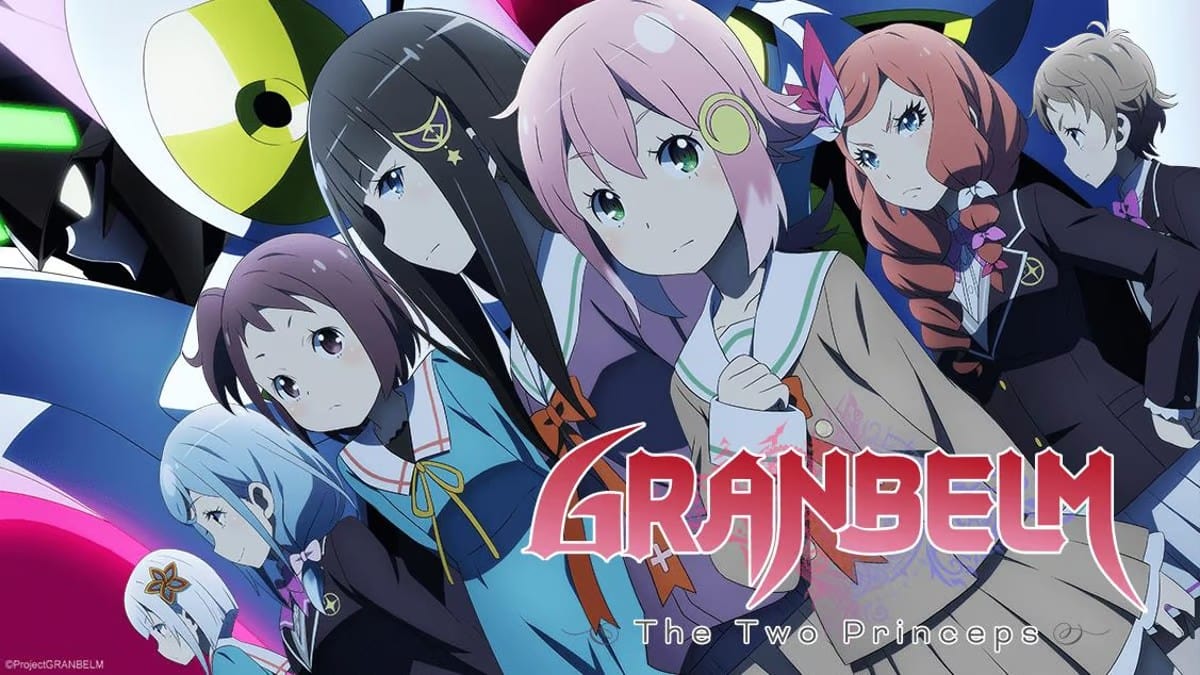
What happens if we mix Mahou Shoujo, Mecha and Battle Royale into one? We get Granbelm – an emotional story about the lives of young girls entangled in an ancient war.
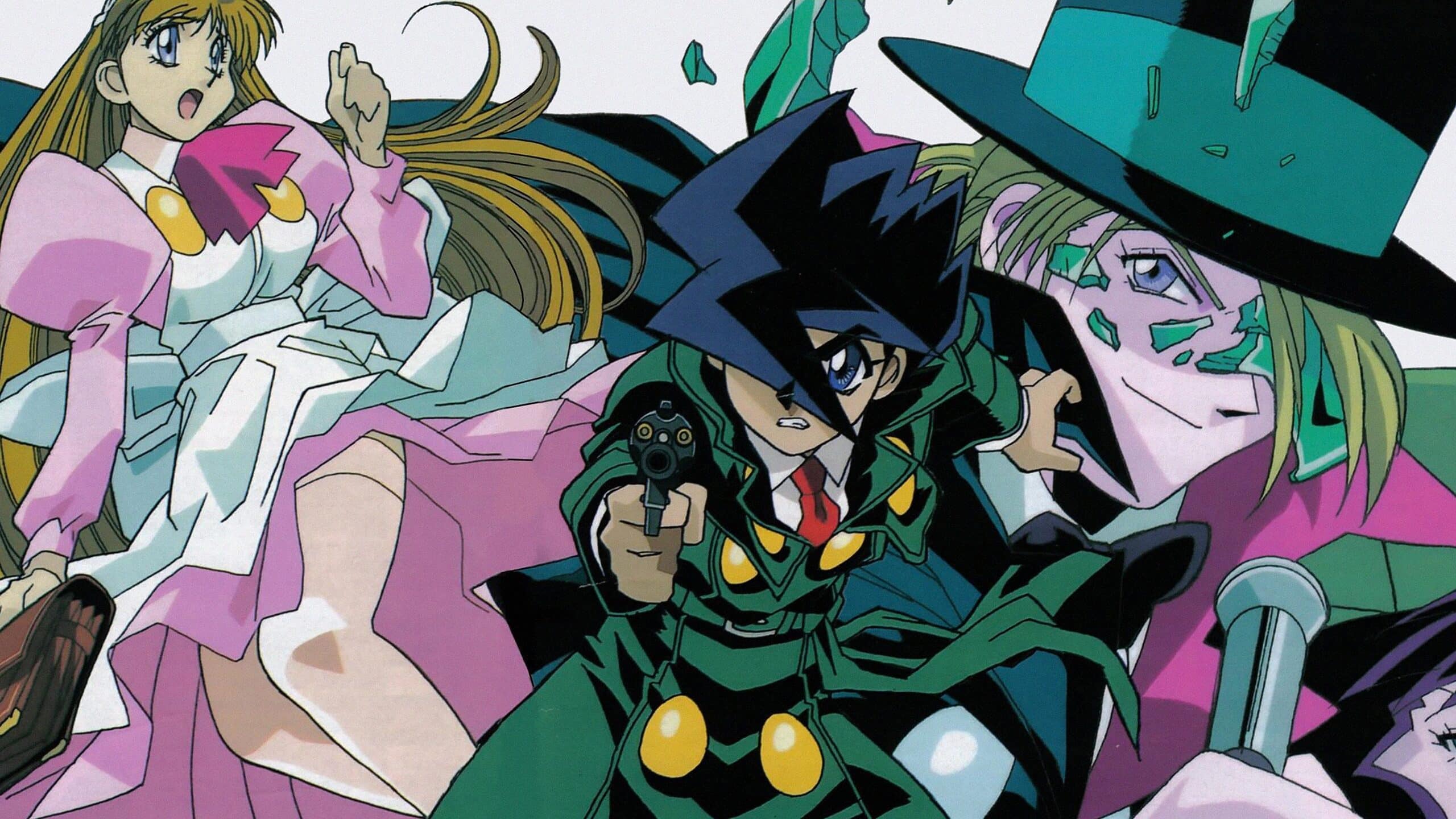
In the city of smoke and steam, a young kid works as a detective alongside his nurse and butler to protect the peace. An old classic for fans of the steampunk style.

The 2nd season of the lovely Mass-Produced Riko series. Join Riko and co as they embark on an all new venture, while drawing interesting lesson from building plastic models.

The long-awaited continuation of the mecha isekai of pain. Season 2 of Muv-Luv Alternative is definitely trying to woo you by slamming intense scenes at you – but is it worth it?

One of the most difficult to adapt Mecha series, Muv-Luv Alternative anime started off with a questionable season, but you should still check it out.

A remake of another Tatsunoko hero. The Space Knight returns with a completely new story, design and brings us on an emotional journey of a tragic hero.
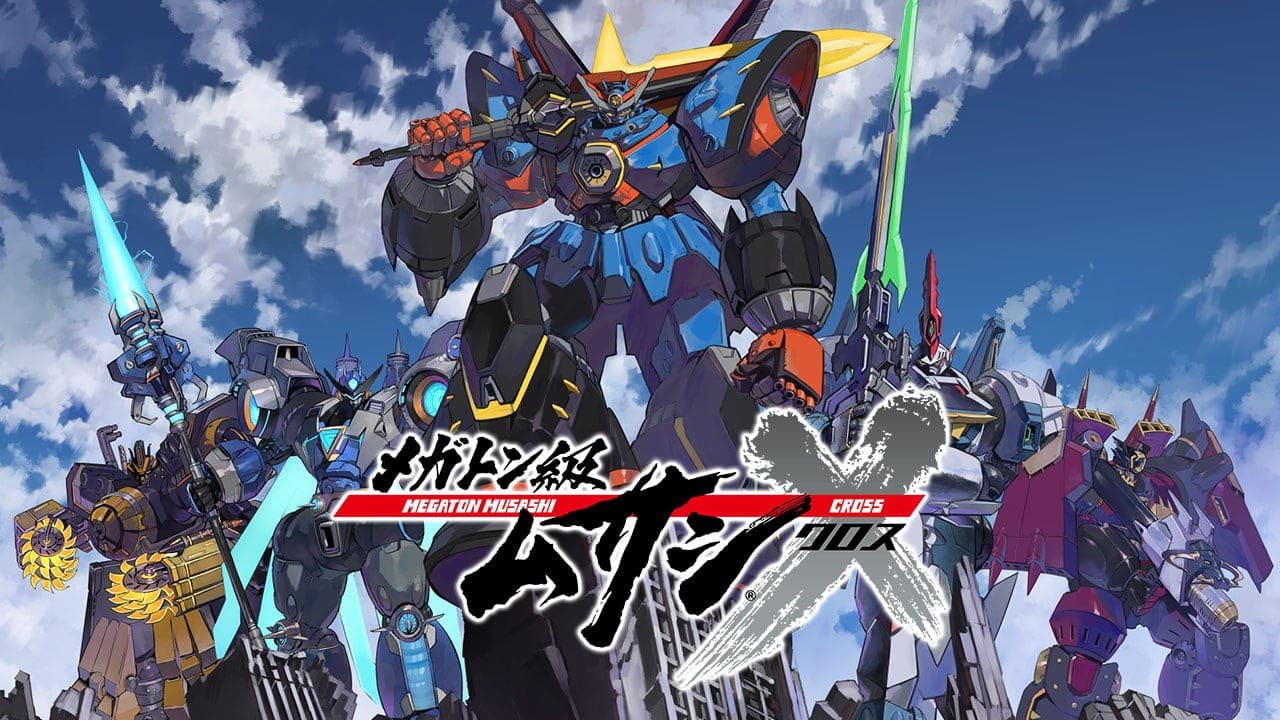
The continuation of the hot-blooded saga, this time filled with emotional drama and even more badass action. A great video game adaptation but not without flaws.
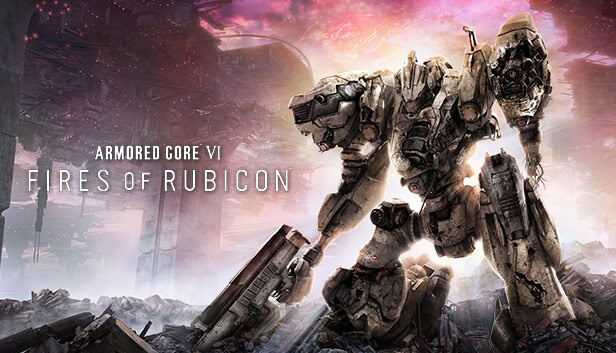
The long awaited legend’s return that satisfy all mecha fan’s longing for a good game. Armored Core 6: Fires of Rubicon is an experience you have to play to believe.
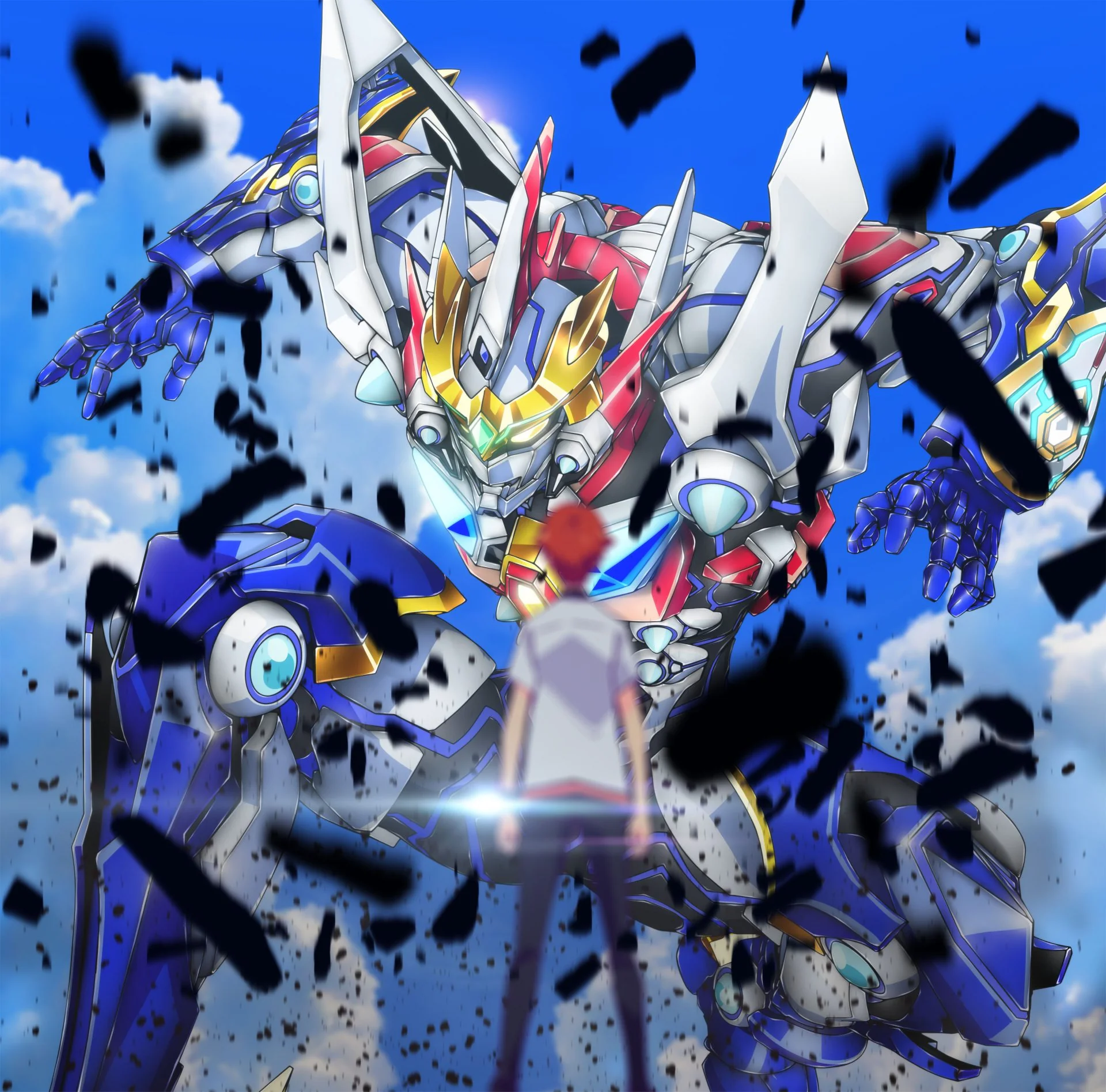
Universes collide as the cast of Gridman and Dynazenon is caught in a dimensional anomaly. But what’s more troubled is Yuuta – who has to become Gridman again with a troubled heart.
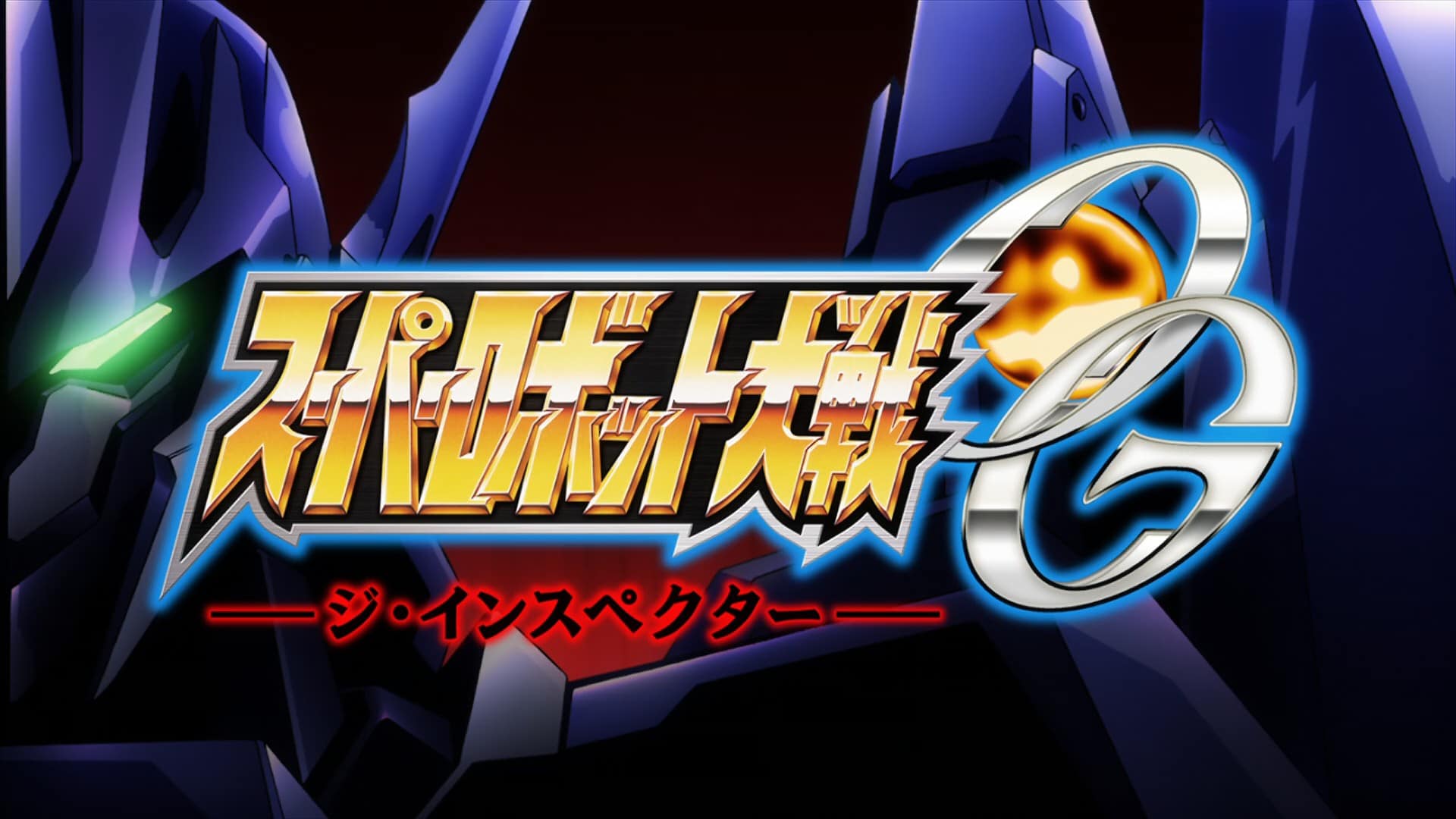
When you talk about the most badass mecha, you have to mention SRW OG and Masami Obari. And when these two combine, you get the best SRW anime of all time.
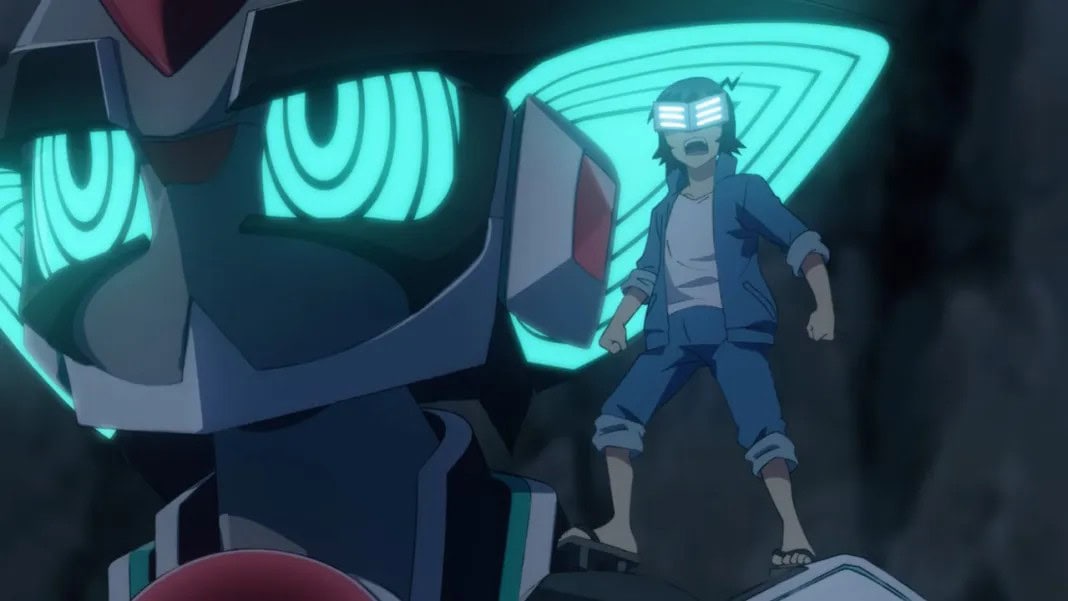
A unique series where the true pacifism versus justice. A bold premise and interesting gimmick make Planet With a very selective series in terms of audience – but it definitely deserves a chance.
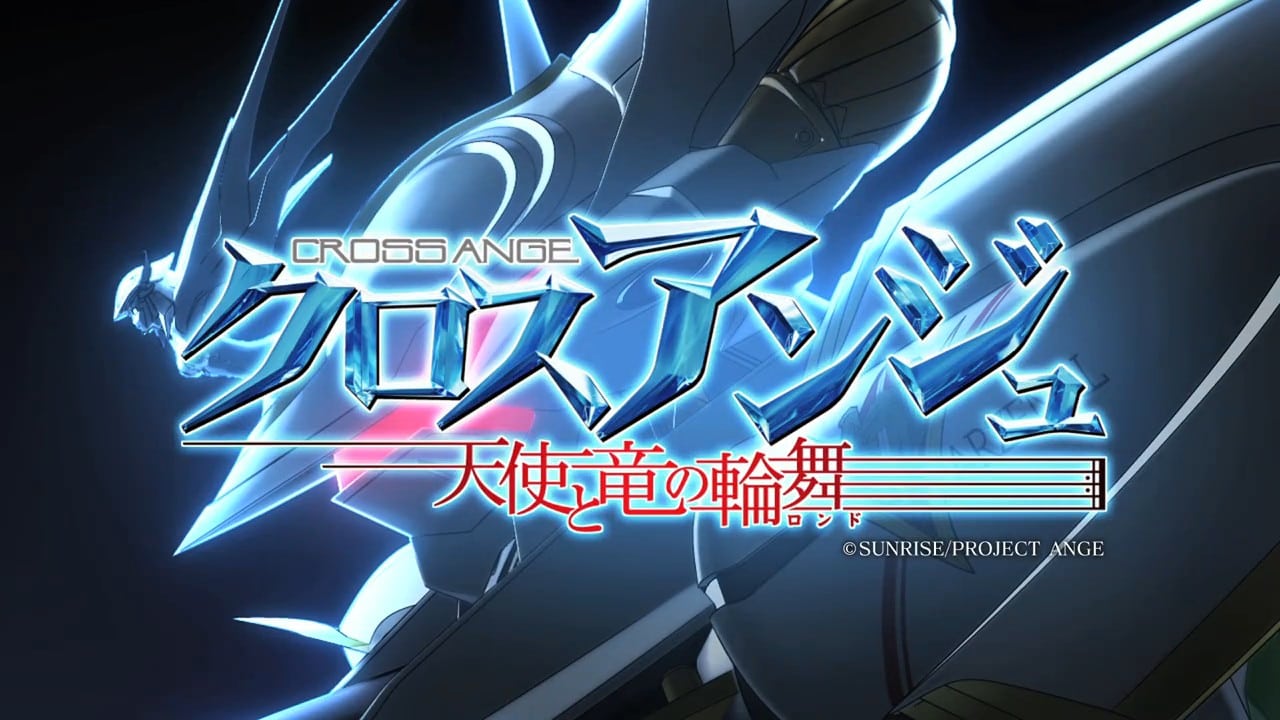
From the studio that created Buddy Complex and Valvrave, Cross Ange is another Sunrise’s original that challenges the limit of its audience once more .
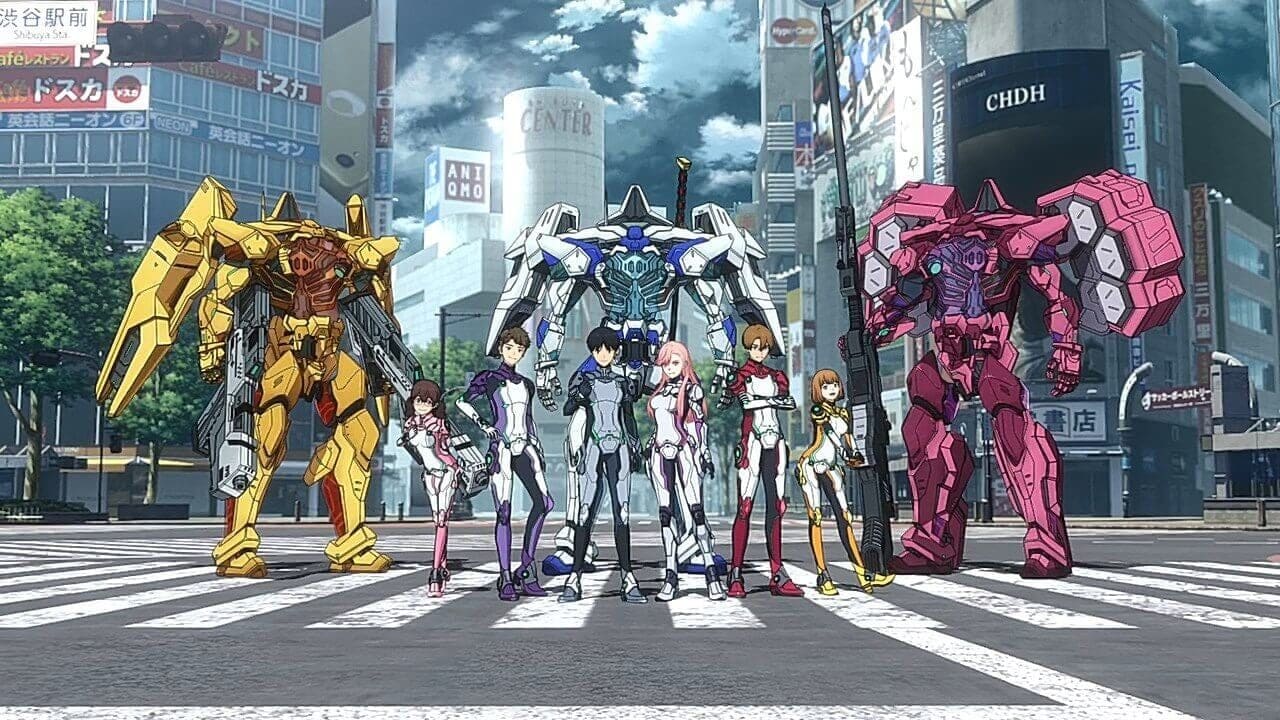
What will you do if you’re teleported to a time with giant grotesque monsters? For teenage student Daisuke Doujima, it’s a perfect chance for him to become a hero, and a saviour. But can he?
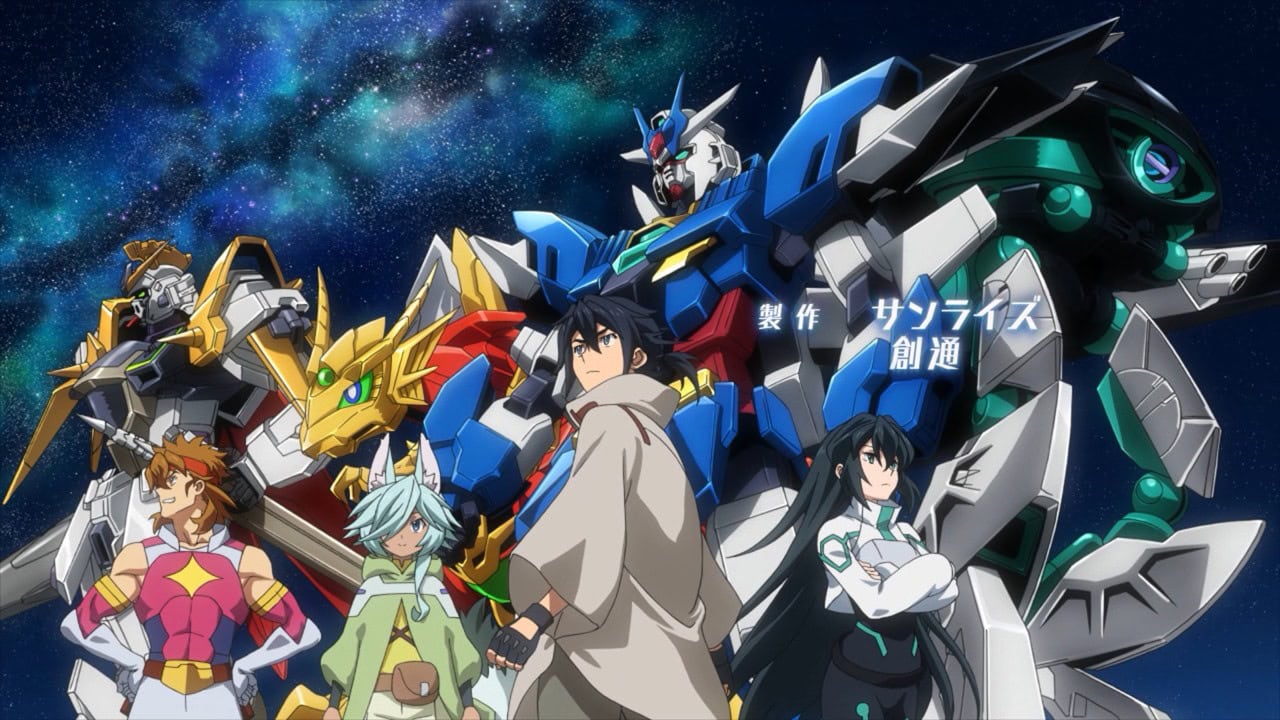
After 2 lukewarm series, Gundam Build rose to form again with Re:Rise. A story with deep characterization for a diverse and likeable cast and awesome Obari action.

Time to go digital! Build series is going full SAO and virtual with Build Divers – a light-hearted series and fun to enjoy without the need to complicate things.

Following GBF, Sunrise wanted to capture the magic with TRY. However, they fell just short of greatness but still create a series with amazing Gunpla battles.
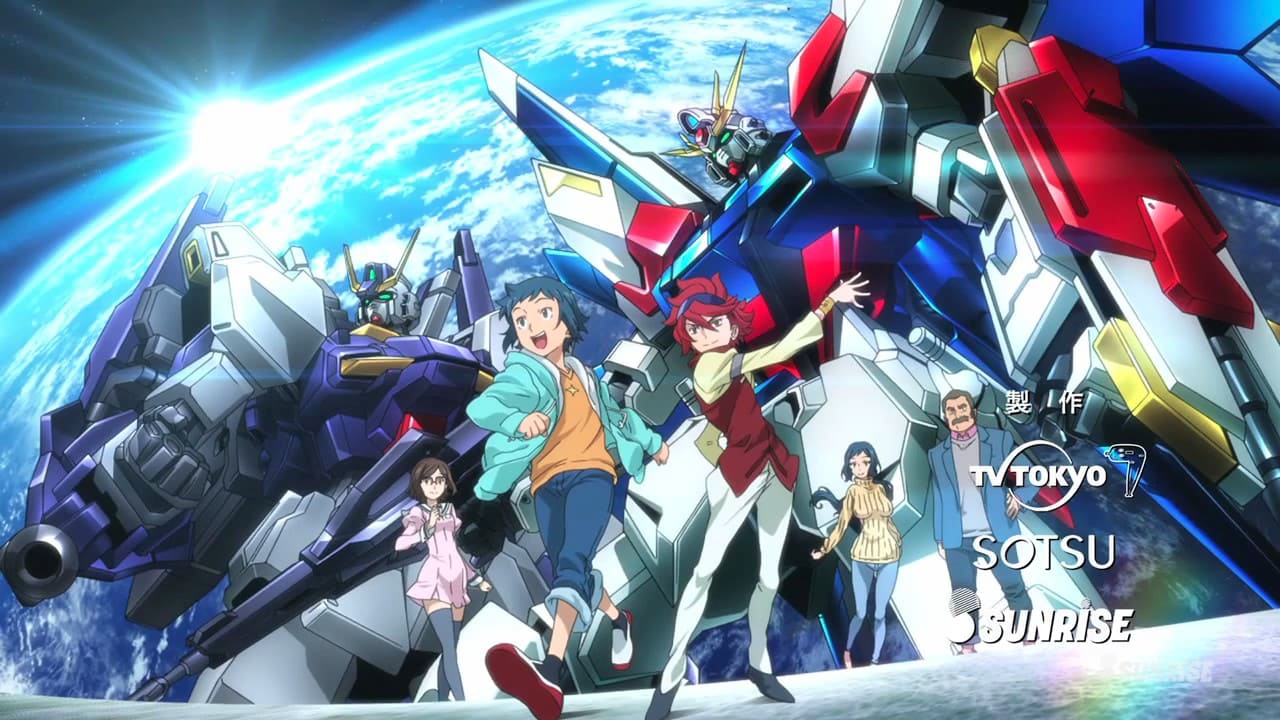
A hobby turned combat sport. Sunrise’s effort to attract new fans turned into a compelling series with gorgeous battles featuring iconic MS from the franchise.

The first animated Build series, Beginning G opened up new venues and excitement for the hobby, with light-hearted yet intense traditional MS battle.

Do you want a Gundam series with a brighter tone but still has banger battles? Then Metal Armor Dragonar is a perfect series for you!

A series about building regular model kit, and using them to find inspiration in life. A very uplifting and chill series for mecha fans to change their perspective on their hobby.

The sequel to SEED – a series that brought Gundam on top of the radar. Destiny is a sequel that earned both the intense love and hate within the fandoms.

An anime adaptation of a sci-fi novel with the same name, Yakitori really stir up the scene with its unusual storytelling and animation style. However, the characters really hold the series up.

A Fafner novel written by Tow Ubutaka – the person who understand Fafner the most. Explore Kazuki’s POV and his relationship in a way you’ve never seen before.
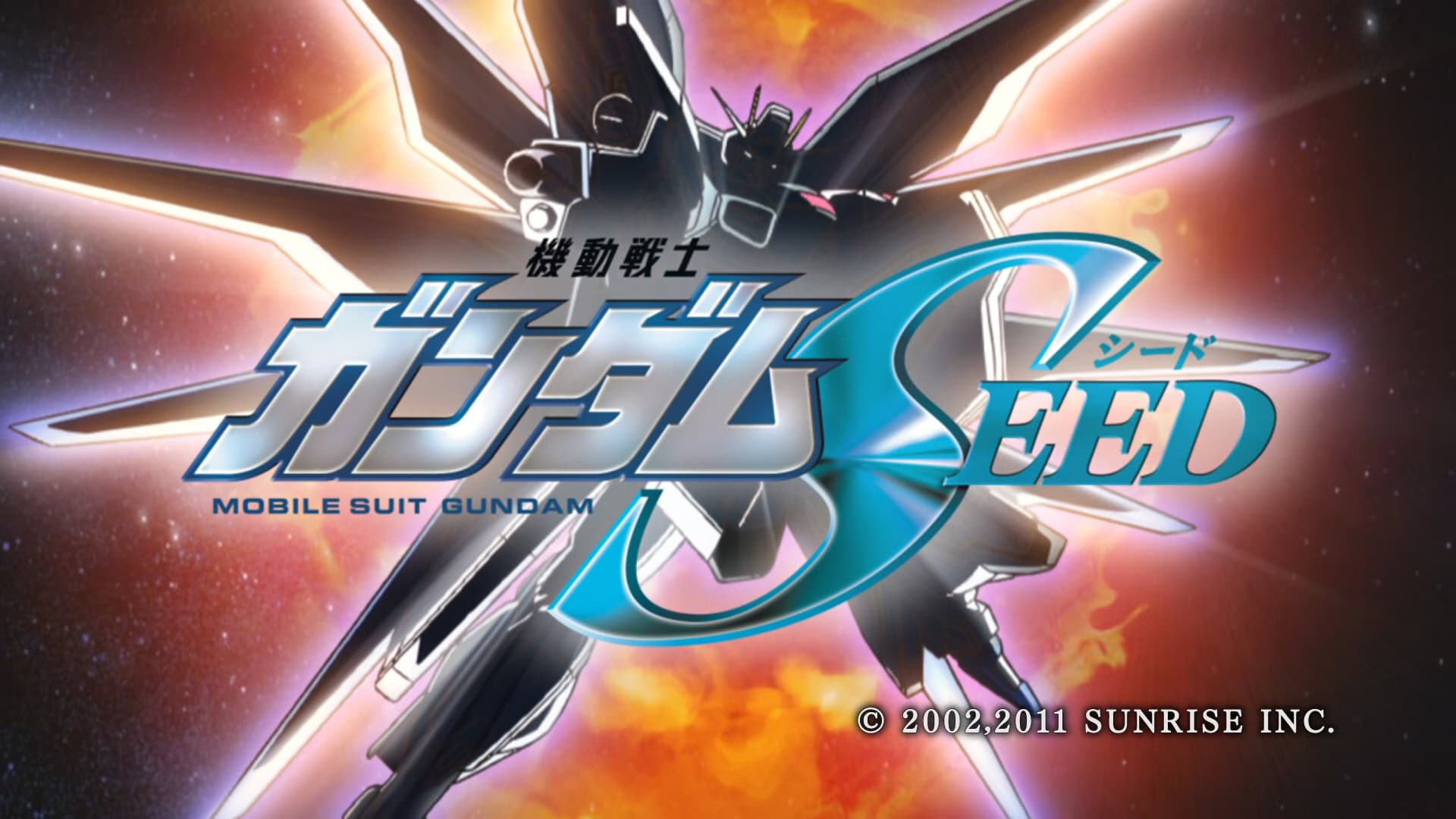
A new Gundam for a new era. Gundam Seed is one of the most popular modern Gundam series that has fans all around the world. And it also received much love from Sunrise as well.

A love letter to commemorate the pioneer of the Mecha genre, Mazinger Z Infinity remind us of the conviction and justice that the Iron Castle had, is, and will stand for.
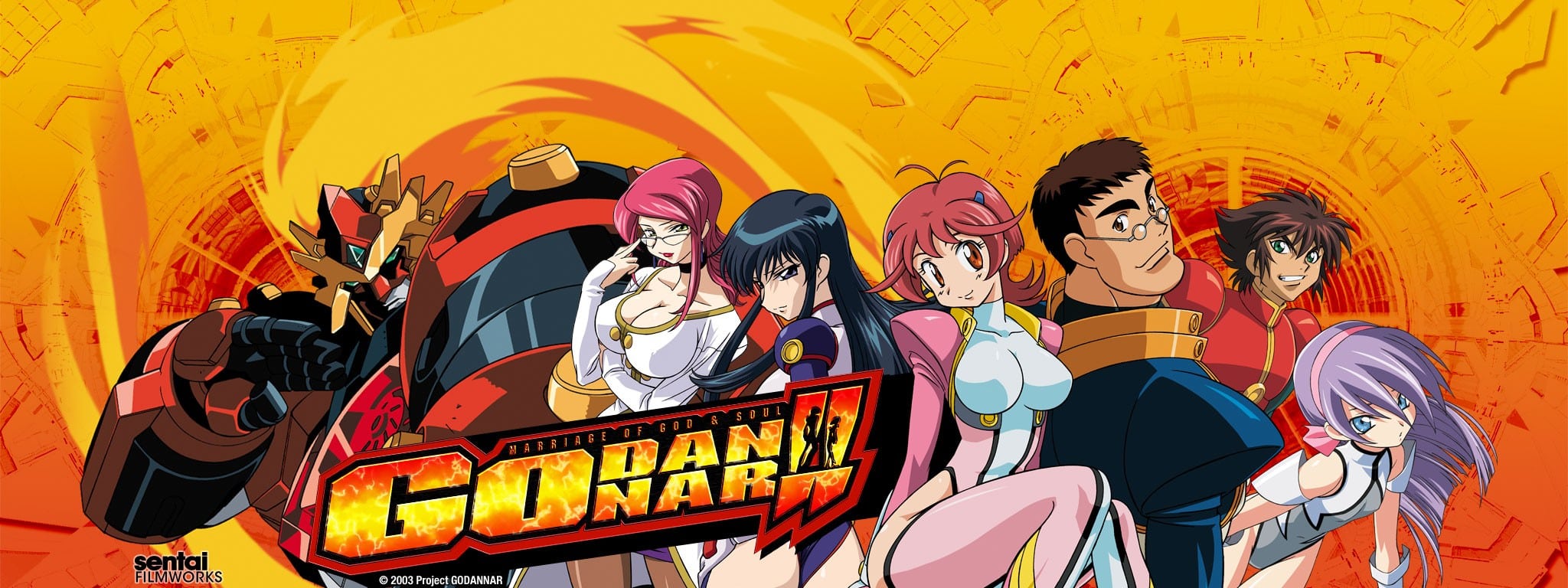
A badass and action-packed super robot series with an age-gap marriage between the two main characters. A hearth-throbbing and passionate tale about love and perseverance.

A new story of the boy who awoken a machine. Casshern Sins follow a conflicting young man in a world where life seems meaningless, yet everyone yearn for it anyway.
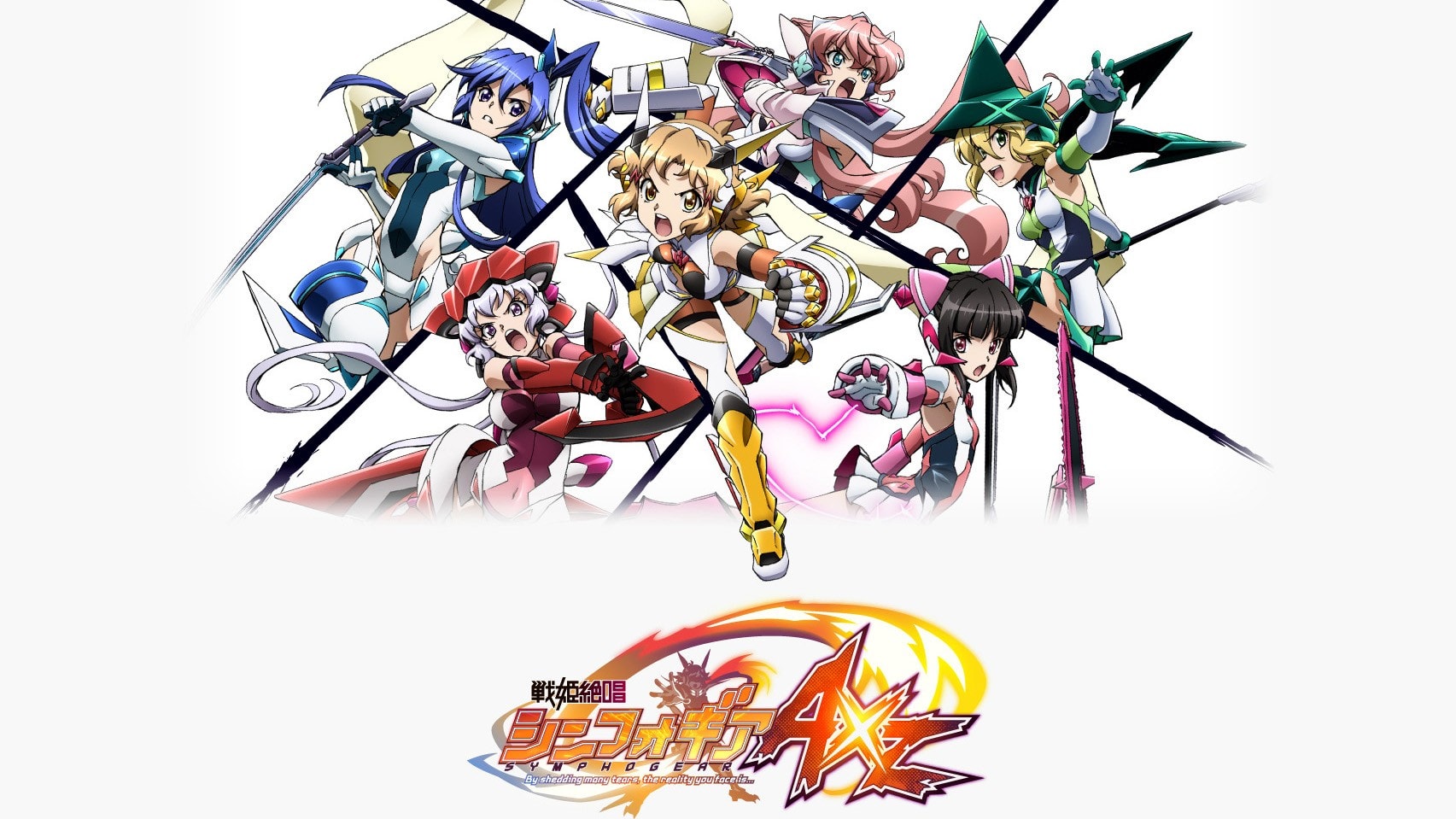
Just when things have calmed down, the Gear Users once again face an apocalyptic threat from a mysterious high order. This put Hibiki and her friends at risk once more.

New threats emerged to threaten the world. But new allies also appear to bring the Gear’s songs to a new level. A new battle await the girls!

Mahou Shoujo x Tokusatsu combined with plenty of mecha references, Symphogear bring us an audio and visual experience that is just the beginning. of a great franchise.
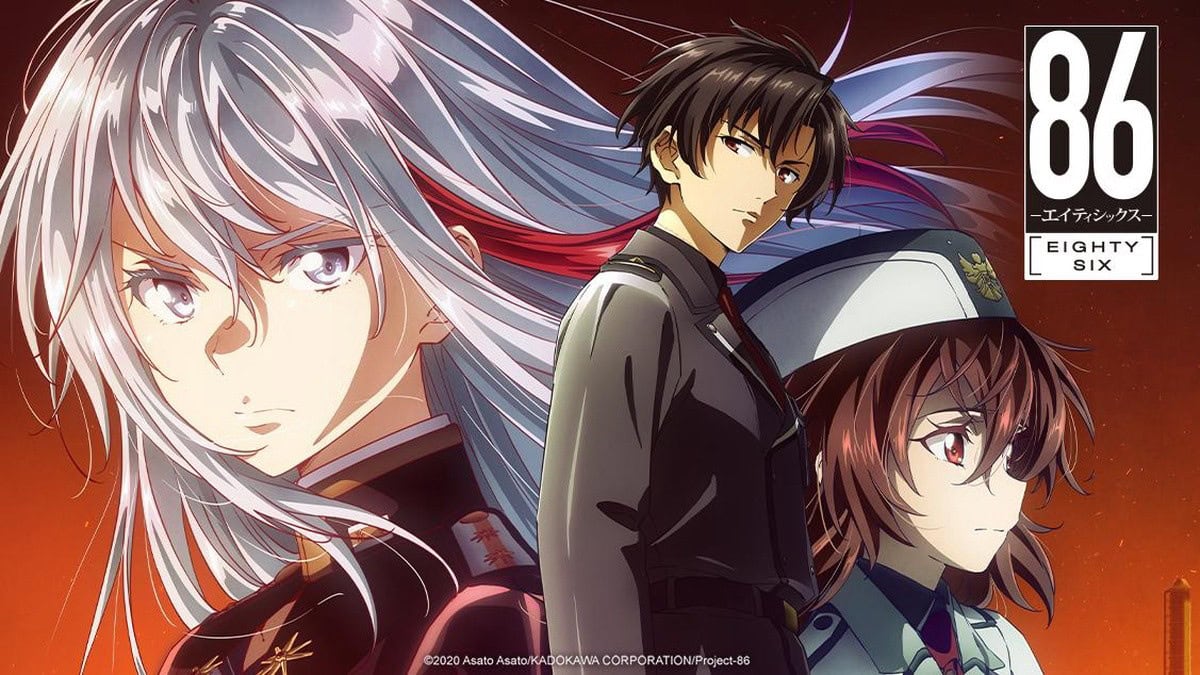
A new nation, a new story, a new battlefield. The reborn Eighty Six must choose between a life of peace or death. Will the Reaper be able to move on?
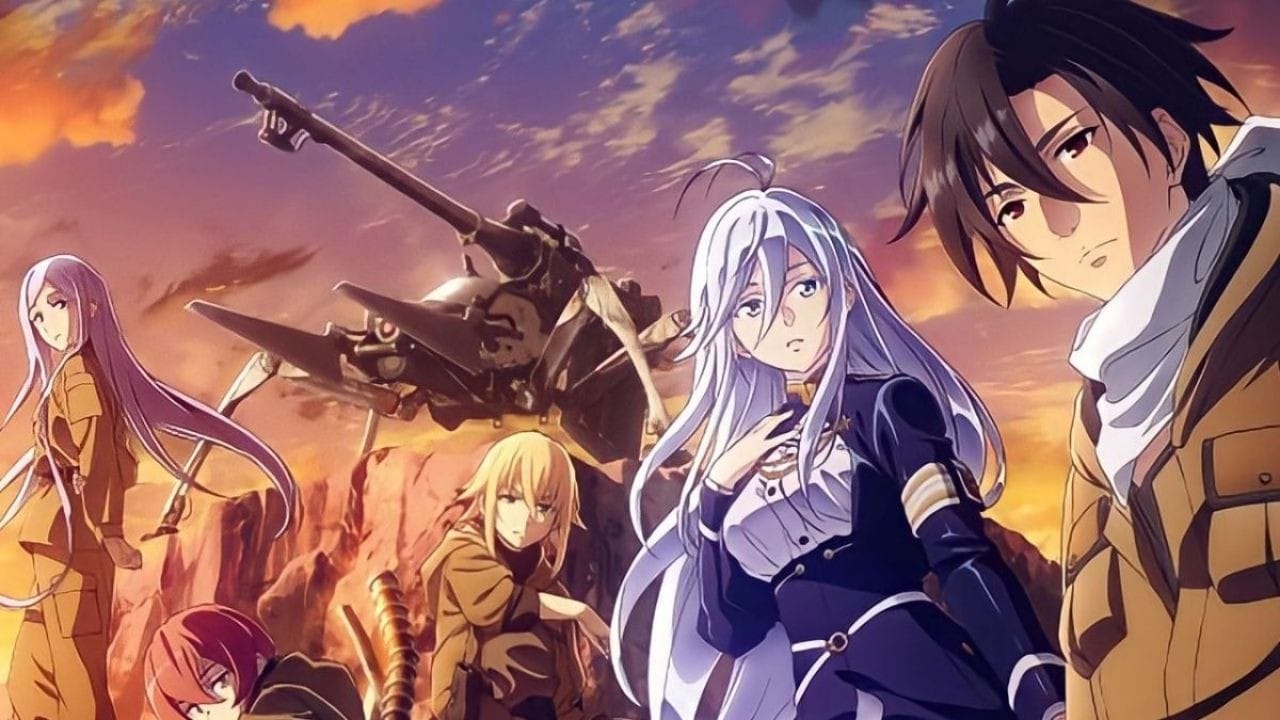
The depressing, gripping yet hopeful world of Eighty Six brought to life with A-1’s adaptation. The vision of Asato receives a depiction so emotional like no others.

A fun dogfight experience with some mecha combat thrown into the mix, Strike Suit Zero scratches some of that Macross action game that PC gamer has been wanting.

With his life completely smashed apart and turned upside down, teenage boy Ayato had to navigate a new world while being the key to control the winged giant RahXephon.
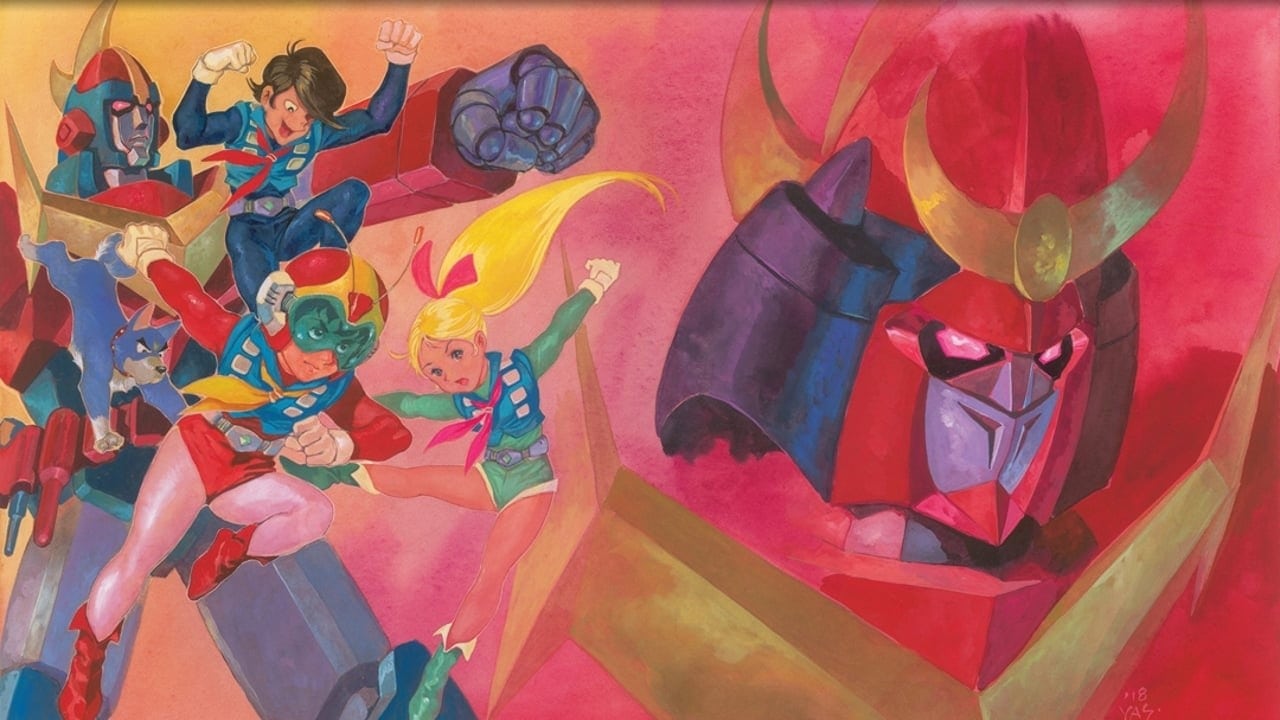
Not just your usual 70s Super Robot, Zambot 3 is more than just a battle between good and evil, but also about endurance, perseverance and the unyielding heart to do what’s right.
